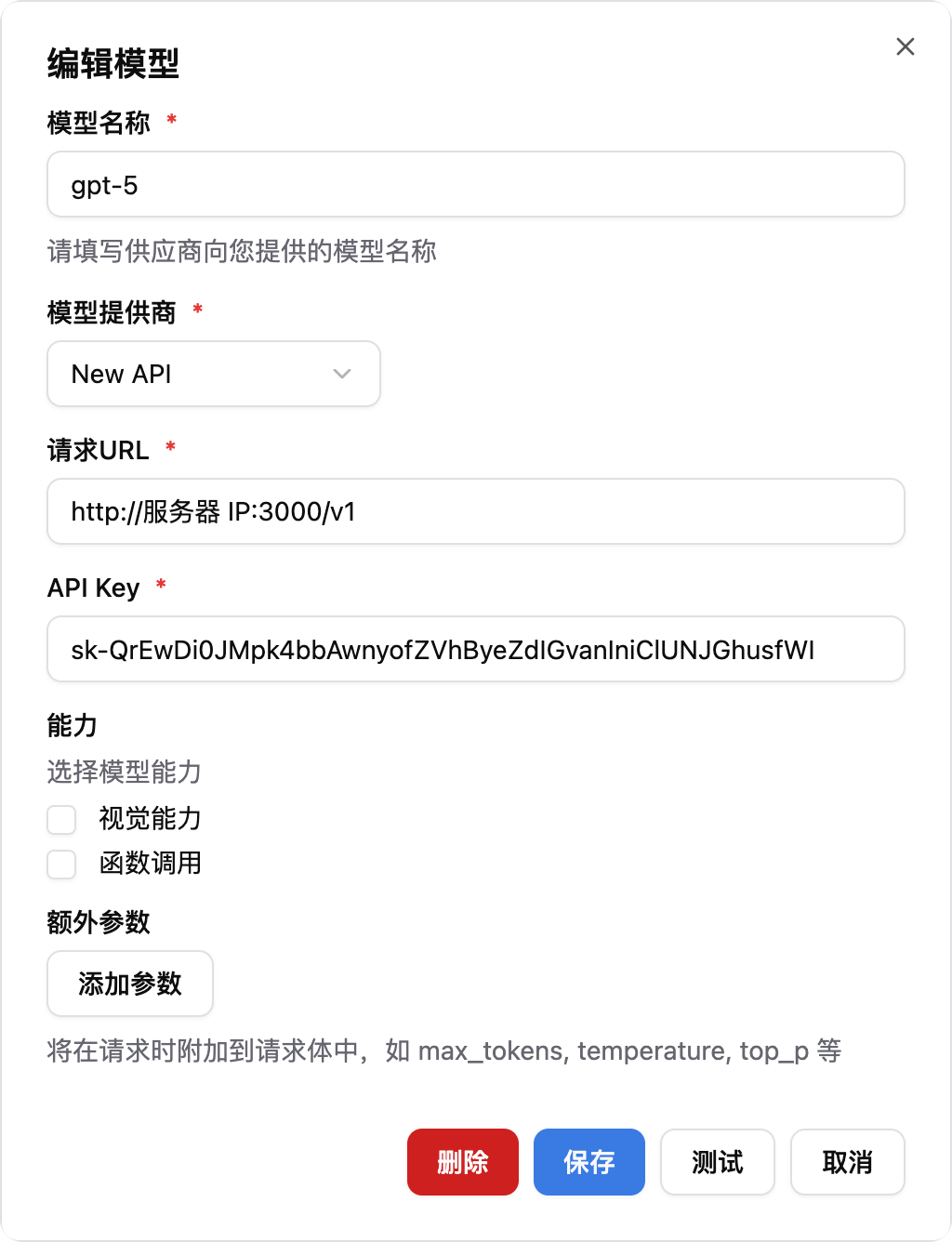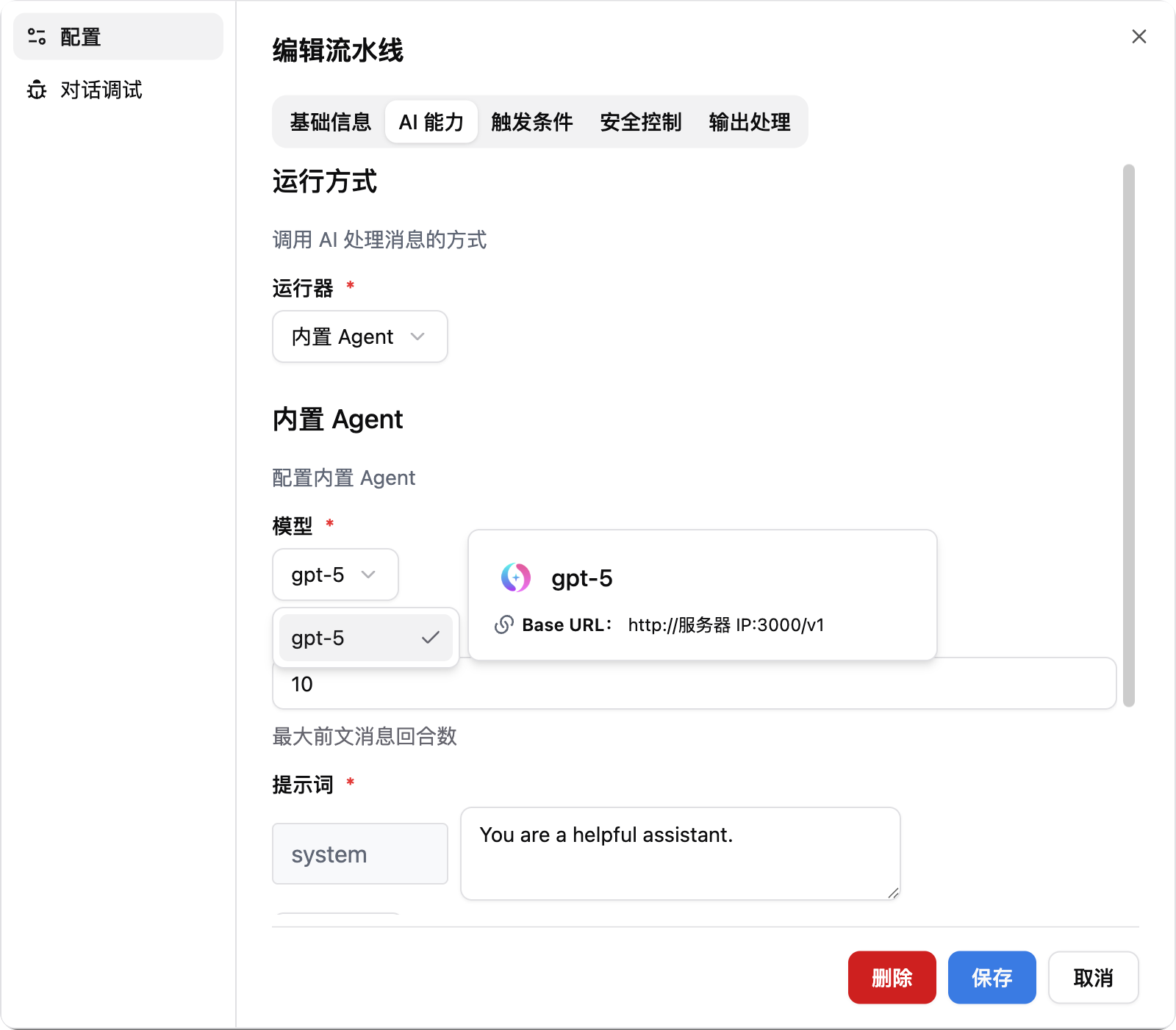Integrating LangBot with New API
New API is a next-generation large model gateway and AI asset management system, designed to address issues such as fragmented access to multiple AI service providers, difficulty in cost control, and insufficient service stability. Its core advantages are focused on three aspects:
- Multi-provider compatibility: It has integrated over 30 AI service providers and achieved 100% OpenAI compatibility (that is, it supports calling models from other service providers in the OpenAI interface format, reducing development costs);
- High availability: It promises 99.9% service availability to meet enterprise-level stability requirements;
- Ease of use and controllability: It supports "one-click deployment" for quick access, and also provides a "flexible billing" function to help users control AI usage costs, while taking into account "security and stability" features.
1. Deploy New API Locally (Docker Container Method)
For more deployment methods, refer to the New API Deployment Guide
This deployment method uses an SQLite database (lightweight, no additional deployment required).
Enter in the command line:
bash
docker run --name new-api -d --restart always \
-p 3000:3000 \
-e TZ=Asia/Shanghai \
-v ./new-api/data:/data \
calciumion/new-api:latest⚠️ Note:
- Replace
./new-api/datawith the actual folder you want to use.
After deployment, open http://server-IP:3000 to configure New API.
2. Connect LangBot to Local New API
- Add New API Model
- Model Name: Enter the model name configured in New API
- Model Provider: Select New API
- Request URL: Enter
http://server-IP:3000/v1 - API Key: Enter the token created in New API

- Select the newly configured model in the pipeline

- Now you can use the models in New API.
